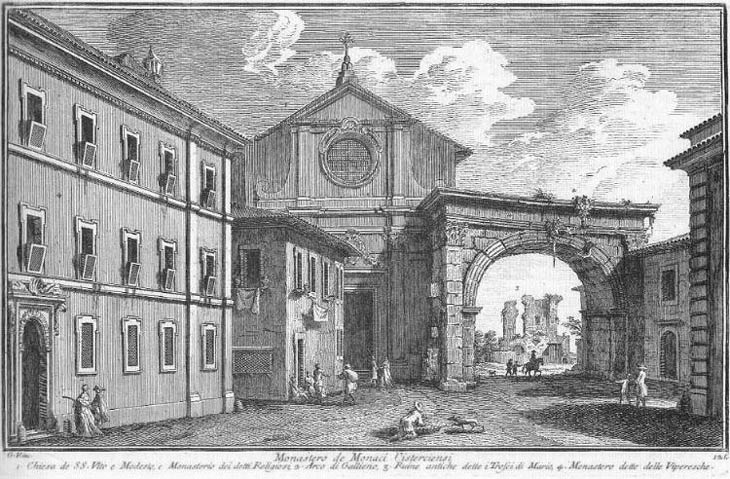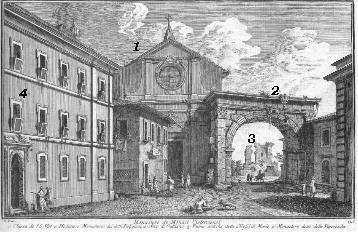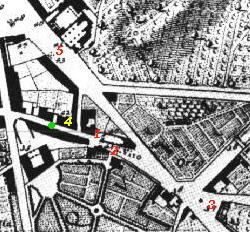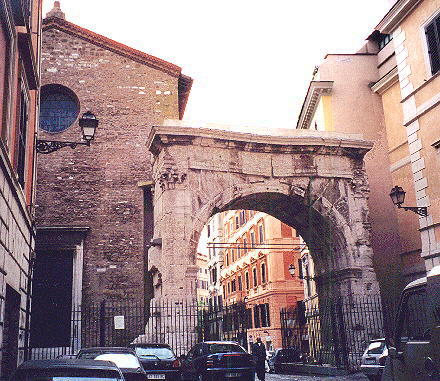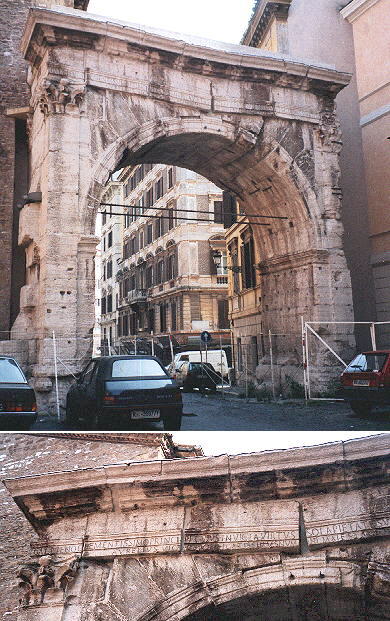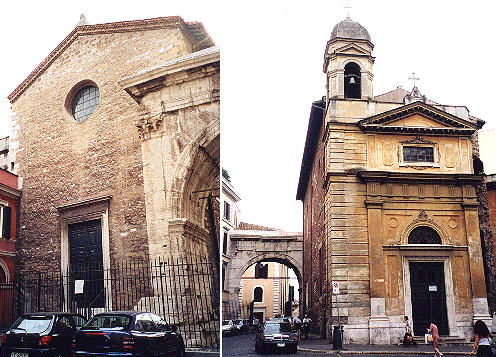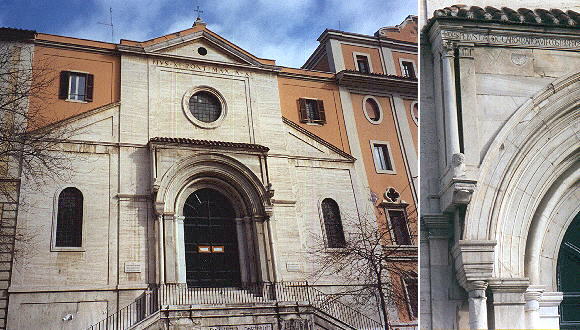  Monastero de Monaci Cisterciensi (Book 7) (Day 2) In this page:
As in other cases the objective of Vasi is not exactly that mentioned
in the title of the plate. His real targets are the Arch of Gallienus and the
ruins called
Trofei
di Mario. The view is taken from the green dot in the small 1748 map here below.
In the description below the plate Vasi made reference to: 1) SS. Vito e Modesto;
2) Arco di Gallieno; 3) Trofei
di Mario; 4) Monastero delle Viperesche. 3) is shown in another plate. The small map shows also 5) S. Antonio Abate.
The monasteries are no longer there, nor one can see the ruins in the background, yet the emotion on discovering the Roman arch in the narrow square is the same.
The Arch was erected in 262 in honour of the Emperor Gallienus, whose virtues are still mentioned in the sentence above the arch. It is in the site of the former Porta Esquilina of the Servian Walls and actually with the retrenchment of the city in the Middle Ages the arch was used again as a gate.
The entrance to the church was reoriented in the XIXth century and
a new fašade was built on Via Carlo Alberto. In recent times the church
was brought back to its original orientation and given a sort of medieval
fašade. The church is in part built making use of the Servian Wall.
The Monastery of S. Antonio Abate became first a hospital in the
late XIXth century and then in the 1930s the Seminar for the Russian-Byzantine
rite (thus it is called now Russicum). The changes, including the level
of the street, have not altered the beauty of the 1269 Romanic portal. S. Antonio Abate is the patron
of pack-animals, so once a year horses and donkeys were brought to the square in front of the church to get blessed.
The ceremony is briefly described by J. W. Goethe in his Italienische Reise (January 18, 1787).
Next plate in Book 7: Convento dei Padri di S. Bernardo
Go
to |
All images © 1999 - 2003 by Roberto Piperno. Write to romapip@quipo.it
